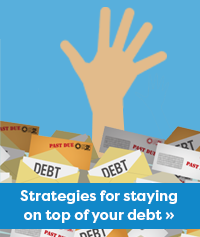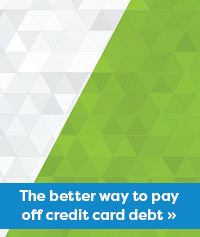The Difference Between Helpful and Harmful Debt

When you hear the word ‘debt’ you may automatically think of its negative connotation. After all, many people are told that having any form of debt can be harmful to their personal finances.
What’s important to realize is that there are forms of debt that can be considered ‘good’ by helping you build wealth, increase your net worth or finance something that will offer a good return on your investment or quality of life. This debt differs from ‘bad’ debt that you are unable to pay off or which negatively impacts your credit score.
In this article, we’re going to break down examples of helpful and harmful debts so that you can differentiate between the two for your next financial decision.
Types of helpful debts
A classic example of a form of debt that’s considered to be ‘good’ is a student loan. This is generally considered to be financially helpful because with it you are funding your education, which can lead to career opportunities and potentially an increase in income. Some student loans will also have lower interest rates compared to other loan types, and the interest may be tax-deductible. These loans, which benefit you in the long term, are considered to be worth the debt when you look at the bigger picture.
A mortgage loan, like a student loan, is another kind of debt that benefits you long term. This is because when you purchase a home or property, you are building equity in that asset that may give you a positive return on your investment when you sell in the future. With a mortgage, there are also possible opportunities for tax breaks, accessing your home equity and even making extra income through rentals.
Another example of a helpful debt comes when starting your own business. This can be a big financial undertaking and often requires a business loan. Over time, however, your venture will generate income, thus creating value. In the long run, this debt comes with many opportunities for future financial gain when carefully planned. CUA offers many resources for small business owners to help them achieve their financial goals.
Remember that while these are examples of helpful debts since they provide an opportunity to increase your income, it is crucial to pay your loans back responsibly so that they don’t become bad debts over time.
Types of harmful debts
Now that we’ve established examples of debt that offer potential positive returns on your investment, let’s take a look at one of the top examples of bad debt, which is unpaid credit card debt.
A credit card is a common way to pay for goods and services. In fact, the vast majority of individuals and businesses use credit cards as their primary method of payment of items they have purchased. Credit cards provide good debt when they are paid off completely when due and your income is sufficient to do this without compromising other things that need to be paid. Credit cards become bad debt when you do not pay off the full balance each month or in doing so, you have to sacrifice something that is also important to pay for, such as your mortgage. A good rule of thumb is to remember that if you won’t be able to pay off your credit card on time, you should hold off on making unnecessary purchases. Find more tips on making the most out of your credit card.
Another example of a harmful debt is a payday loan. These high-interest loans offer borrowers a sum of money (a portion of their next pay cheque) with the understanding that they will repay the loan on their next payday. Often these lenders charge very high interest rates. This can lead to a cycle of borrowers taking out more loans so that they can pay back the previous ones. When borrowers are unable to pay back their loans, collection agencies may get involved. This can negatively impact the borrower’s credit score, affecting future financial opportunities. A safer alternative might be a personal loan, so that borrowers can avoid these high interest rates and feel confident in their ability to repay what is owed. Based on what we’ve learned so far about harmful debts, which is that they are debts you are unable to pay off or which could negatively impact your credit score, it’s safe to say payday loans fall into this category.
Sometimes differentiating between helpful and harmful debt isn’t as obvious as it seems. A classic example you will often see of ‘bad debt’ is using a loan to purchase a car. Vehicle loans can be very helpful in giving you a necessary form of transportation. But since vehicles depreciate in value the moment they leave the dealership parking lot, in all likelihood you will not see a positive financial return on your investment. Nevertheless, for many people cars are a necessity, particularly for getting to and from work. A vehicle loan is a helpful product for those who wish to pay for their vehicles over time rather than requiring cash up front. Remember as well that a bad debt generally means that you are unable to pay off the loan or that it negatively impacts your credit score. With CUA’s Vehicle Loan product, you can access competitive variable or fixed interest rates, while staying confident in your ability to pay off the loan on time. Reach out to a member of our team to learn more about whether a Vehicle Loan is right for you.
The better way to deal with debt
As with any debt, whether ‘good’ or ‘bad,’ it is crucial to have a plan in place to pay back what you owe and exercise caution when making these financial decisions. You can rely on our team to offer advice and guidance as you take on and pay off debt. We’re here every step of the way. If you have any questions, feel free to reach out to a member of our team at 902.492.6500.
Published September 7, 2022






